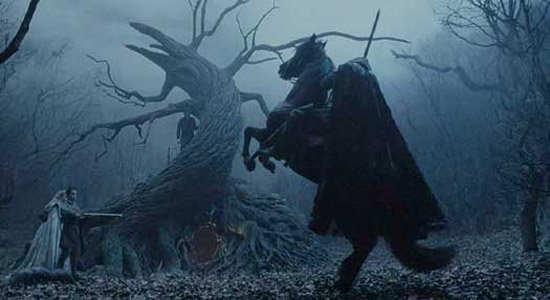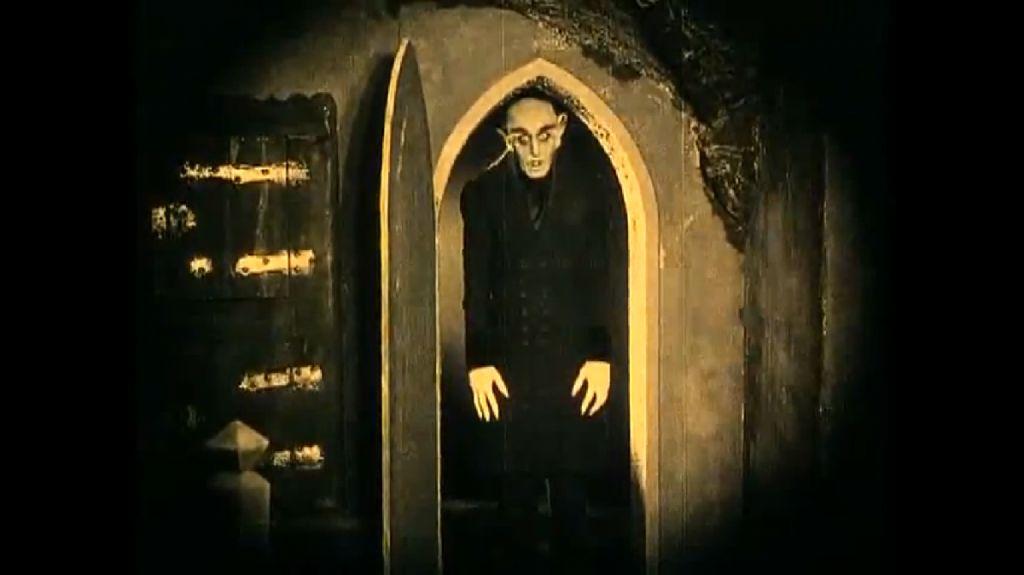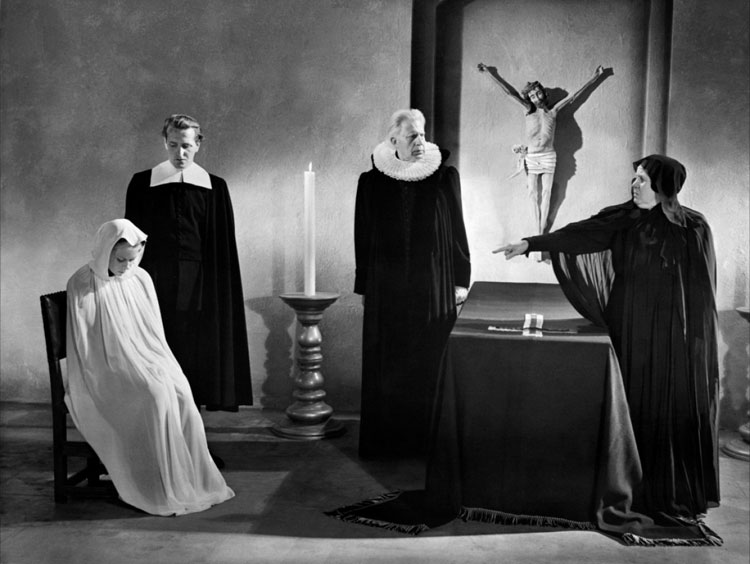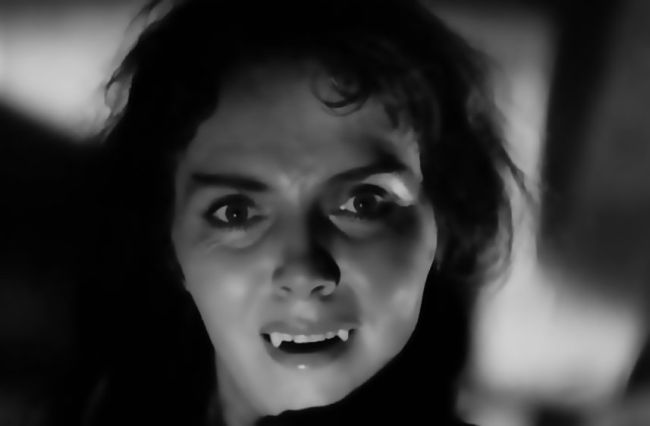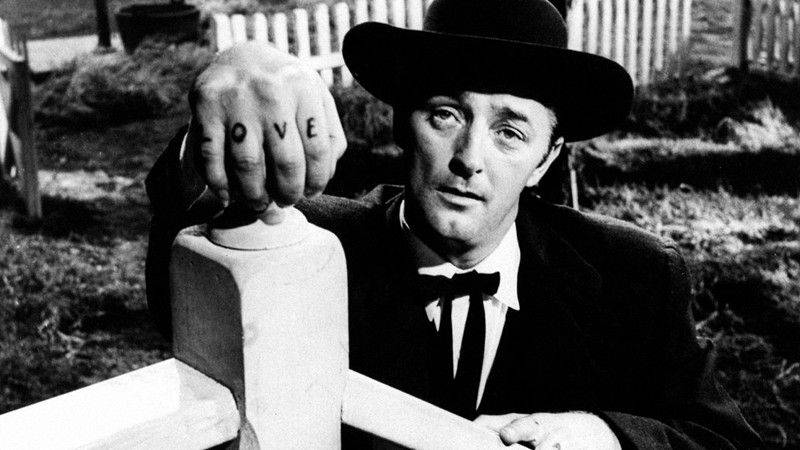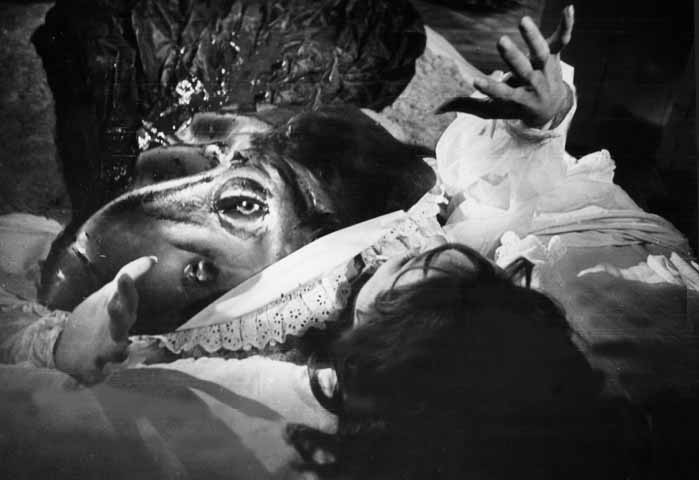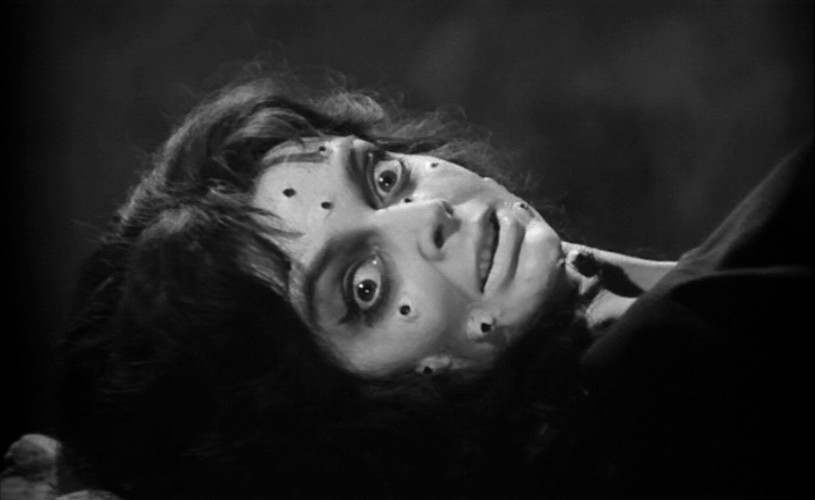The term ‘Folk’ tends to be seen as describing, historically, a form of traditionalism in a country’s culture and especially in a country’s rural culture which has not been affected by modernity to the same degrees as its metropolitan counterparts. Every Culture in the world has started out with its different ‘folk’ customs and beliefs, some of which have been lost to history and some of which have survived in the form of folktales, folk music and, in the contemporary world, in films that can be seen to contain a folk sentiment.
In terms of film this folk sentiment can be said to include things such as a historical, rural setting, a traditional view of the world that is formed by those living in these rural settings, and the tales and legends that make up the folklore which paints our own modern perspective of what people once believed and of what living in these times and places entailed.
So, with the sense of mystery and fear tied in with both the beliefs attributed with societies of the past and historical and contemporary rural life itself, it is not difficult to see why the idea of ‘folk’ has been so well suited to horror films. Writer and Actor Mark Gatiss first coined the term ‘Folk Horror’ in the 2010 three-part series ‘A History of Horror’ when mentioning three British films in particular, all of which appear on this list.
However folk horror as a genre, though small, is not merely exclusive to one country but can be seen in the films of a number of different countries worldwide, many containing aspects of their own rural heritage. Being a smaller horror genre some of the examples here may seem a stretch in terms of going against what the popular idea of a folk text is, but all contain elements of this in one way or another, whether it is the setting, the inclusion of supernatural elements, or the fact that often the countryside can be just as unsettling and dangerous as any city.
1. Nosferatu (Germany – 1922)
Certainly the oldest film on the list, F.W Murnau’s German equivalent of Dracula (the rights of which Bram Stoker’s widow wouldn’t let him have) is one of the most well known, and earliest, horror films ever made as well as being an example of the German Expressionist style of film-making popular at the time. The image of actor Max Schreck as the title monster remain in the viewers memory long after viewing, and is even recognisable to people who haven’t seen the film, showing the impact the film has had on popular culture since its release.
It is also a good example of folk horror, most of the action taking place in the area surrounding the desolate Carpathian mountains where the local peasants tell stories of a certain Count Orlok who lives in a remote castle and drinks human blood. A businessman named Hutter comes to visit his firm’s new client, Count Orlok, at his home where he soon discovers that Orlok is indeed a blood-thirsty vampire but not only that, Orlok takes a shine to Hutter’s wife Ellen whom he sees a portrait of and soon he’s on the ship to Hutter’s hometown to get her, bringing a black plague with him. Nosferatu is an important early cinematic horror film which was remade in 1979 by Werner Herzog as Nosferatu the Vampyre, which is also well worth checking out.
2. Day Of Wrath (Denmark – 1943)
Carl Theodor Dreyer’s Day of Wrath is less of an outright horror film than one that deals with the horrors that came about from the puritanical religious beliefs that swarmed rural Europe during and prior to the 17th Century, namely that of witchcraft.
The film centres upon the local priest of a small Danish village in 1623 whose much younger second wife, Anne, becomes smitten with his son from a previous marriage. The priest initially suspects nothing, certainly not that his new wife and son are having an affair, but the ever watchful eyes of his own mother, the domineering matriarch of the film who despises Anne, miss nothing. The priest’s mother looms over most scenes as a repressive presence, much like the threat of witchcraft accusations which are catching in the village and also similar to the threat of fascism that some see the film as being metaphorical of in the period it was made.
The film begins with an old woman being brutally tortured before burning at the stake (a sequence which is surprisingly nasty for a film from this period) and the atmosphere of doom that this creates infects the film as a whole. Day of Wrath is a slow-burning, heavy film but an important one no less, giving an insight into the superstitions of much of Europe at the time.
3. The White Reindeer (Finland – 1952)
Based on real Finnish folktales, The White Reindeer tells the story of Pirita, daughter of a witch, who eventually inherits her mother’s powers. With the help of a shaman she can turn herself into a large, white Reindeer, the like of which the Finnish hunters see as a great prize. As a Reindeer, Pirita lures the men to their various dooms just when they think they have caught her.
The vast, white wilderness of rural Finland compliments the mythological and fantastical elements of the film. It is essentially a lycanthropic tale using Reindeer as metaphors for power and sexuality rather than werewolves and creating a haunting, dreamlike vision of traditional Scandinavian life.
4. The Night Of The Hunter (US – 1955)
Folk horror is transported to the southern states during the great depression of the 1930s in Charles Laughton’s only film as director. The initial commercial failure of The Night of the Hunter upon first release is well documented, and the effect it had on Laughton meant that he was never to direct another film. This is a shame because if his future output were to be anything as exceptional as this film he may have become a great auteur in his own right.
Murderous preacher Harry Powell learns of a widow and two children whose husband was hanged for stealing a large sum of money, and whom he believes hid the money in the house. He tracks down the widow, subsequently marries her and torments the children into telling him where the money is.
The plot is dark, Powell’s unstoppable thirst for the money sees him carry out some truly awful acts, but it is the expressionistic style that the film uses which makes it different from other such ‘noir’ films. Forced perspective, shadows and interesting lighting angles lend the film a dreamlike quality such as in the scene where the children escape down-river on a raft in the night. Night of the Hunter looks like very few other films of the era and with its unique visual style, haunting soundtrack and tale of Southern folk gothic it is one that continues to endure.
5. Blood And Roses (France – 1960)
Though a French film, Blood and Roses takes place on a large estate in the Italian countryside where Carmilla Carnstein (Annette Vadim) has been possessed by the soul of her ancestor Millarca Carnstein, who just so happened to be a vampire (Also note that Millarca is an anagram for Carmilla). Now Carmilla finds she too is hungry for blood and no better place to get it from than her cousin’s fiancé, Georgia.
One of the first Lesbian vampire films, Blood and Roses is based on the novel Carmilla by Joseph Sheridan Le Fanu which was also filmed as The Vampire Lovers by Hammer in 1970. That version lacked the dreamy quality that Blood and Roses possesses though, with its incredible use of vibrant colours and a particularly startling dream sequence that comes near the end of the film. We learn that, far from being a monstrous predator, Carmilla (or Millarca) is a poignant figure who had no luck in love when she was alive and even less now that she is dead.
6. Black Sunday/ Mask Of Satan (Italy – 1960)
Mario Bava is a well known name in the international horror arena and this is one of his best known films. Sometime in the past a witch is put to death via an Iron Maiden to the face, (not the band) but not before she puts a curse on those who persecute her, swearing she will return again to seek vengeance. Centuries later her grave is disturbed and her curse is fulfilled when she takes over the body of a descendent of hers who looks the exact same.
The topics of witchcraft and the supernatural crop up in most folk horrors and Black Sunday is no exception. Horror icon Barbara Steele plays both the witch and her new host-body as she wreaks havoc upon those who stand in her way. The film has all the familiarities of a black and white supernatural film of the early 60s: a tonne of fog, rain, a haunted tomb, gothic buildings, attacking bats and so on, but it is set apart from other such films because of the sombre tone that the film holds all the way throughout, not to mention the dark, almost fairytale aspect of the story and the setting.
